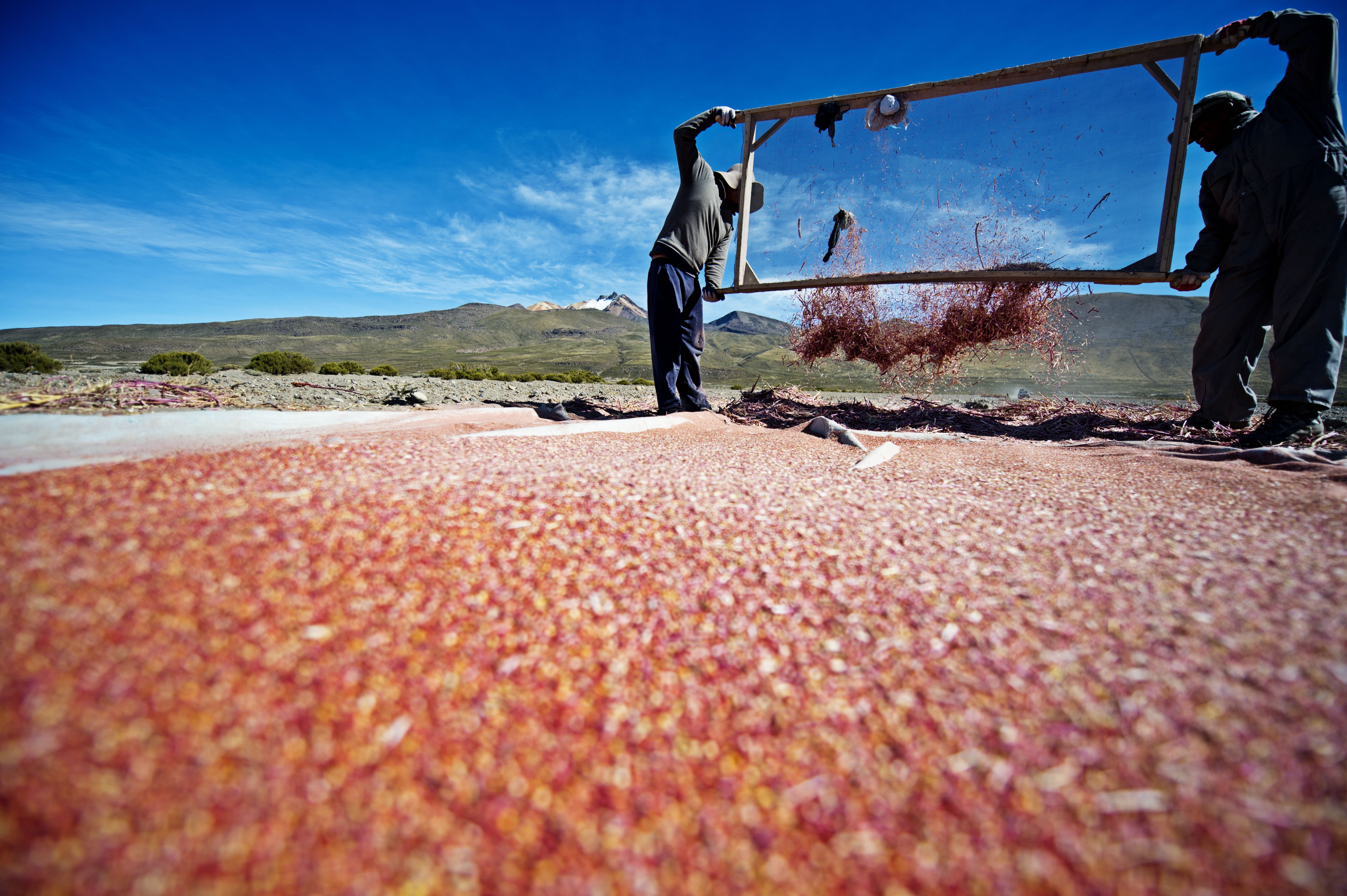
Sciences & Technology
Finding quinoa’s sweet spot to feed the world

Traditional knowledge from the Andes is inspiring research on quinoa flowering to develop future breeding programs
Published 21 January 2020
All over the world people are curious about quinoa.
It’s not whether to order the white, red or black type for lunch, more importantly we need to know which varieties will grow best in which parts of the world, and there are dozens of varieties to chose from.

While it’s been a staple crop for the Andean peoples for millennia, quinoa has been embraced as a nutritious ‘superfood’ in the West and its ‘super’ status is growing.
The University of Melbourne is part of new research aimed at understanding the genes involved in quinoa flowering in order to boost productivity, because quinoa is an ideal crop for the future, says Dr Agnieszka Golicz from the University of Melbourne’s Faculty of Veterinary and Agricultural Sciences.

Sciences & Technology
Finding quinoa’s sweet spot to feed the world
“In terms of diet, quinoa is an excellent source of essential amino acids, trace elements and vitamins and it is also gluten free,” she says.
“And its ability to grow in drought, cold and salty (saline) soils, makes quinoa a more resilient crop than many grains, like wheat and rice.
“This is important for food security as harsher climates are predicted with global warming.”
Quinoa is regarded as such an important crop that the United Nations Food and Agriculture Organization declared 2013 as the ‘International Year of Quinoa’.
“Our team wanted to understand more about the complex genetic pathways that govern the flowering process, as this is the first step towards seed formation,” says Dr Golicz.
“These pathways will provide clues to how we could boost crop productivity and understand more about their preferred growing conditions.”

Along with Dr Ursula Steinfort from the Pontificia Universidad Católica de Chile, Dr Golicz has led the first genome-wide analysis of quinoa’s flowering genes.
The project included PhD candidate, Hina Arya, and is part of a larger research program on flowering and crop yield, led by Professor Prem Bhalla and Professor Mohan Singh from the University of Melbourne.
Quinoa was first domesticated by Andean peoples around 3,000 to 4,000 years ago, becoming an important staple crop.

“But during the Spanish conquest of South America, the colonists banned its cultivation due to its status within indigenous religious ceremonies, and the Incas were forced to grow wheat instead,” explains Dr Steinfort.
But some Andean peoples kept quinoa for their own families in very small crops across the highlands of Peru, Bolivia, and the Interandean valleys, to the coast of Chile and Chiloe Island.
Crops are grown along the coastal parts of Chile up to the Andean highlands, as well as in the subtropical valleys of Peru. Depending on the variety, optimal growing conditions vary between −4 °C during the night to near 35 °C during the day.
“Quinoa’s history has led to many distinct ecotypes that only grow well in specific latitudes with their unique environmental conditions,” says Dr Steinfort.
This has led to a number of different subspecies, varieties and landraces – local varieties of domesticated plants that have adapted to the environment in which they originated.
Each of these varieties created a unique genetic identity, a genotype, developed according to their intended use and tolerance to adverse growing conditions.

These include quinoa varieties like ‘Coytos’ for flour, ‘Utusaya’ to resist salinity, ‘Witullas’ and ‘Achachinos’ to resist cold, ‘Kcancollas’ to resist drought and ‘Quellus’, or yellow seed, for high yield.
When Western farmers grow quinoa, it is a process of trial and error to work out which variety should be grown and where. For example, some Peruvian or Bolivian varieties from lower latitudes fail to form grains when grown at higher latitudes.
So the research team set out to produce the first catalogue of flowering genes that could act as a guide to speed up traditional breeding programs.

Environment
We can have urbanisation and enough to eat
They used the recently produced full quinoa genome sequence of Chenopoduim quinoa Willd, to identify genes that were ‘switched on’ at certain times of growth and in specific parts of the plant, including the whole seedling, leaf, stem, flower, and regions of plant growth or meristem.
The team then compared the genes identified in the quinoa sequence to databases of known flowering genes from the laboratory reference plant Arabidopsis, as well as sugarbeet and spinach that are both more closely related to quinoa.
“We revealed 611 flowering genes that match Arabidopsis genes, as well as 459 genes that are specific to the flower or growing sections of the quinoa plant,” says Dr Golicz.
“This may seem like a lot of genes just for flowering. But in order to know when to flower, the plant must sense which season it is by detecting the length of the days, and temperatures because sometimes the plant will only flower after a certain period of cool weather - a process known as vernalisation.
The plant must then instruct the flowering process to begin, which is also regulated by a cascade of hormone signalling.”

The team’s next experiments will untangle which of these genetic pathways are important in which quinoa variety and when they are ‘switched on’.
“Understanding which quinoa varieties have a preference for cold-induced flowering and how sensitive they are toward long or short days will hopefully help us use traditional breeding techniques,” says Dr Golicz.
“This will help develop varieties that are well-adapted to different daylight and temperature conditions and allow growing of quinoa in new regions,” says Dr Golicz.
“By combining modern analysis with traditional knowledge we will have a valuable resource for plant biologists, crop physiologists and breeders to understand more about quinoa, a really super food. There is so much potential for this crop.”
This work was supported by Chile’s CONICYT, Proyecto Fondecyt (ID: 11170226) and the University of Melbourne McKenzie Fellowship.
Banner: Juan Carlos Torrico/ Pixabay